[PART-1Ahttp://oldphotosbombay.blogspot.com/2011/09/1a-bombaymumbai-taxi-1850-to-2001-also_3982.html
[PART-1Bhttp://oldphotosbombay.blogspot.com/2011/09/1-b-bombaymumbai-taxi-1850-to-2001-also.html
PART-2]http://oldphotosbombay.blogspot.com/2011/04/glimpses-of-ol-bombay-and-western.html
[PART-3]http://oldphotosbombay.blogspot.com/2011/04/glimpses-of-old-bombay-and-western_02.html
[PART-4]http://oldphotosbombay.blogspot.com/2011/04/4glimpses-of-old-bombay-and-western.htm
[PART-6]http://oldphotosbombay.blogspot.com/2011/04/6.html
[PART-7]http://oldphotosbombay.blogspot.com/2011/04/6-glimpses-of-old-bombay-and-western.html
[PART-8]http://oldphotosbombay.blogspot.com/2011/04/7.htm
[PART-9]http://oldphotosbombay.blogspot.com/2011/04/first-anglo-maratha-war-was-first-of.html
[PART 10]http://oldphotosbombay.blogspot.com/2011/06/bombay-history-of-cinema-1896-and.html
[part11]http://oldphotosbombay.blogspot.com/2011/06/indian-modes-of-irrigation1874-elephant.html
6 DEDICATED TO THE FIRST CITY-MUMBAI-[BOMBAY] ;OF INDIA.part-6 OF 12
Glimpses of old Bombay and western India, with other papers (1900)
DELAY OF DAK POST,TRAVEL DIFFICULTIES,DACOITY OF POST AT PAREL,TIGER ATTACK POST AT SALCETTE(VASAI)BULLOCK CARTS,PALKIS,HORSE OMNIBUSES,BUGGIES,TRAMS
| parel government house |
In 1826 the mail was lost between Calcutta and Nagpore. It consisted of only fortyfive letters.

| Caption | The Post Palanquin of India. Illustration for Chatterbox, 1870. |
|---|---|
| Creator | English School (19th century) |
| Artwork medium | engraving (digitally cleaned) |
| Credit | Look and Learn |
| Search stock images by keyword | Post Palanquin India Litters All Nations Post Palanquin of India |
![Bombay Photo Images[ Mumbai]: BOMBAY TO CALCUTTA 1825.1,400 miles in 25 DAYS, IN A PALANQUIN ,AMONG TIGERS AND DACOITS [.travelogue of 1845]](https://blogger.googleusercontent.com/img/proxy/AVvXsEgRDrJZ1U1qJLNEP-tGlYPCOxwJ2k5E4VlJ2M_rLhrgH784z-s54loaLQMQL79e1__Bq-zg2Sc53sV0Uhyphenhyphen8tP5wCWOTm9EhAXFDu1YxWRRDZXg96BUtA-AaoiX9DXA4U24zVW_J4NeOXDNjaHhRtkCM0ZWEgvU5PQ_u97D-bSN6ZhXyQ0UMCrtNs895AzUSq_sUv1o0CMSQ8MPKJQ0=) 1500 × 1187Bombay Photo Images[ Mumbai]
1500 × 1187Bombay Photo Images[ Mumbai]
A gharry in India, 1860s |
And on one occasion, before 1843, her Majesty's mails were lost in a buggalow eighty miles from Aden, but were recovered, though much saturated.
The Modern Idol Jaggernaut
but the last specimen in Bombay will soon, like the sedan chairs of our great-grandmothers, be relegated to the museum of antiquities.
were then coming with sometimes a million sterling of bar silver, an instalment of the eighty millions of profits which were said to have been
Bengal-built dennets, coaches,
barouches,
shigrampos,
curricles,
Curricles, gigs and phaetons in the Regency
Curricles, gigs and phaetons in the Regency
 |
| Ladies in a phaeton from Gallery of Fashion by Nikolaus von Heideloff (1794) |
 |
| A Dasher! Or the Road to Ruin in the West (5/11/1799) by T Rowlandson after GM Woodward published by R Ackermann |
Phaetons, for some years, have deservedly been regarded as the most pleasant sort of carriage in use, as they contribute, more than any other, to health, amusement, and fashion, with the superior advantage of lightness, over every other sort of four-wheeled carriages, and are much safer, and more easy to ride in, than those of two wheels.1
The perch carriage is of the most simple construction, and considerably lighter than the crane-neck; and as the width of the streets in the metropolis gives every advantage to their use in turning, they are the most general. The crane-neck carriage has much the superiority for convenience and elegance, and every grand or state equipage is this way built; but the weight of the cranes, and the additional strength of materials necessary for their support, make them considerably heavier that the others; but their ease and safety in turning in narrow confined places, and also their strength, render them indispensably necessary for foreign countries.2
 |
| Perch high phaeton from A Treatise on carriages by W Felton (1796) |
Lord Orville drove very slow, and so cautiously, that, notwithstanding the height of the phaeton, fear would have been ridiculous.3
As I had never had an opportunity of seeing Bath, a party was formed last night for showing me that celebrated city; and this morning, after breakfast, we set out in three phaetons. Lady Louisa and Mrs Beaumont with Lord Merton; Mr Coverley, Mr Lovel, and Mrs Selwyn; and myself with Lord Orville.4
'Dear! if there is not Mrs Arlbery in a beautiful high phaeton!'5
Although there are no established rules for the size of phaetons, yet a proportion should be observed according to the size of the horses, whether fifteen, fourteen, or thirteen hands high; as the appearance of both ought to be conformable to each other, therefore a middling-sized phaeton, to the middling, or Galloway, sized horses, suits best; many persons are very partial to this size of equipage, being less formidable in the appearance than the high, and more elegant than the low, phaeton; from the moderate size of them, they are, in general, called ladies’ phaetons, are best adapted for their amusement.6
 |
| Middle-sized perch phaeton from A Treatise on carriages by W Felton (1796) |
 |
| Poney or one-horse phaeton from A Treatise on carriages by W Felton (1796) |
A pair of ponies from twelve to thirteen hands high are about equal for draught with a horse of fifteen, and a phaeton of the same weight is equally adapted for either. He continued: Poney phaetons are pretty equipages, and are best adapted for parks only; for, by being so low, the passengers are much annoyed by the dust, if used on the turnpike roads; and one-horse phaetons, where one horse only is kept, are much to be preferred to any two-wheeled carriage for safety and ease, but are heavier in draught; to allow for that, it ought to be built as light as possible to be safe with.7
Miss de Bourgh … is perfectly amiable, and often condescends to drive by my humble abode in her little phaeton and ponies.8
A low phaeton, with a nice little pair of ponies, would be the very thing.9
 |
| Light one-horse or poney Berlin phaeton from A Treatise on carriages by W Felton (1796) |
For a safe, light , simple, and cheap, four-wheeled phaeton, the Berlin is recommended in preference to any: it is a crane-neck carriage, with the body fixed thereon, at such a distance between the bearings as to be perfectly safe.10
 |
| George IV driving his low phaeton in Windsor Park from Memoirs of George IV by R Huish (1830) |
… from the number of persons it is meant to carry at one time. They are intended for the pleasure of gentlemen to use in parks, or on little excursions with their families: they are also peculiarly convenient for the conveying of servants from one residence to another.12
As a general rule it may be taken that when a gig had two horses it was called a curricle, and when there was only one, a chaise.13
 |
| Sir Gregory Gig from print by Bunbury (1782) from Carriages and Coaches by R Straus (1912) |
For lightness and simplicity two-wheeled carriages are preferable, but are less to be depended on for safety; the smallness of their price, and the difference of expence in the imposed duty, are the principal reasons for their being so generally used. They are not so pleasant to ride in as phaetons, as the motion of the carriage frequently gives uneasiness to the passengers. Not having the advantage of the fore wheels, they are neither so safe in their bearings, nor so easy to turn about with, and are therefore inconvenient where the turnings are narrow.14
Curricles were ancient carriages, but are lately revived with considerable improvements; and none are so much regarded for fashion as these are by those who are partial to drive their own horses; they are certainly a superior kind of two-wheeled carriage, and from their novelty, and being generally used by persons of eminence, are, on that account, preferred as a more genteel kind of carriage than phaetons; though not possessing any advantage to be compared with them, except in lightness, wherein they excel every other, having so great a power to so small a draught. They are built much stronger and heavier than what is necessary for one-horse chaises, and the larger they are the better they look, if not to an extreme.15
The proprietors of this sort of carriage are in general persons of high repute for fashion, and who are, continually, of themselves, inventing some improvements, the variety of which would be too tedious to relate.16
I am sure the curricle will hold us all nicely; for I am very little, and Lucilla is not very big.17
In the course of a few minutes, she found herself with Henry in the curricle, as happy a being as ever existed. A very short trial convinced her that a curricle was the prettiest equipage in the world; the chaise and four wheeled off with some grandeur, to be sure, but it was a heavy and troublesome business, and she could not easily forget its having stopped two hours at Petty France. Half the time would have been enough for the curricle, and so nimbly were the light horses disposed to move, that, had not the general chosen to have his own carriage lead the way, they could have passed it with ease in half a minute.18
 |
| Catherine rides in Mr Tilney's curricle from Northanger Abbey by Jane Austen in The novels and letters of Jane Austen ed RB Johnson (1906) |
They had been walking about the place with some of their new friends, and were just returning to the inn to dress themselves for dining with the same family, when the sound of a carriage drew them to a window, and they saw a gentleman and a lady in a curricle driving up the street. Elizabeth immediately recognizing the livery, guessed what it meant, and imparted no small degree of her surprise to her relations by acquainting them with the honour which she expected.19
On their return from the park they found Willoughby's curricle and servant in waiting at the cottage, and Mrs Dashwood was convinced that her conjecture had been just.20
How would Mr. Crawford like, in what manner would he choose, to take a survey of the grounds? Mr. Rushworth mentioned his curricle. Mr. Crawford suggested the greater desirableness of some carriage which might convey more than two.21
They had nearly done breakfast, when the sound of a carriage, (almost the first they had heard since entering Lyme) drew half the party to the window. It was a gentleman's carriage, a curricle, but only coming round from the stable-yard to the front door; somebody must be going away. It was driven by a servant in mourning.The word curricle made Charles Musgrove jump up that he might compare it with his own; the servant in mourning roused Anne's curiosity, and the whole six were collected to look, by the time the owner of the curricle was to be seen issuing from the door amidst the bows and civilities of the household, and taking his seat, to drive off.22
 |
| A hooded gig in the National Trust Carriage Museum at Arlington Court |
Gigs are one-horse chaises, of various patterns, devised according to the fancy of the occupier; but, more generally, means those that hang by braces from the springs; the mode of hanging is what principally constitutes the name of Gig, which is only a one-horse chaise of the most fashionable make; curricles being now the most fashionable sort of two-wheeled carriages, it is usual, in building a Gig, to imitate them, particularly in the mode of hanging.23
 |
| Chair back gig from A Treatise on carriages by W Felton (1796) |
They were prevented crossing by the approach of a gig, driven along on bad pavement by a most knowing-looking coachman with all the vehemence that could most fitly endanger the lives of himself, his companion, and his horse.“Oh, these odious gigs!” said Isabella, looking up. “How I detest them.” But this detestation, though so just, was of short duration, for she looked again and exclaimed, “Delightful! Mr. Morland and my brother!”“Good heaven! 'Tis James!” was uttered at the same moment by Catherine; and, on catching the young men's eyes, the horse was immediately checked with a violence which almost threw him on his haunches, and the servant having now scampered up, the gentlemen jumped out, and the equipage was delivered to his care.24
What do you think of my gig, Miss Morland? A neat one, is not it? Well hung; town-built; I have not had it a month. It was built for a Christchurch man, a friend of mine, a very good sort of fellow; he ran it a few weeks, till, I believe, it was convenient to have done with it. I happened just then to be looking out for some light thing of the kind, though I had pretty well determined on a curricle too. He continued: Curricle-hung, you see; seat, trunk, sword-case, splashing-board, lamps, silver moulding, all you see complete; the iron-work as good as new, or better.25
While Sir William was with them, Mr. Collins devoted his morning to driving him out in his gig, and showing him the country.26
This long meadow bordered a lane, which their footpath, at the end of it was to cross, and when the party had all reached the gate of exit, the carriage advancing in the same direction, which had been some time heard, was just coming up, and proved to be Admiral Croft's gig. He and his wife had taken their intended drive, and were returning home. Upon hearing how long a walk the young people had engaged in, they kindly offered a seat to any lady who might be particularly tired; it would save her a full mile, and they were going through Uppercross. The invitation was general, and generally declined. The Miss Musgroves were not at all tired, and Mary was either offended, by not being asked before any of the others, or what Louisa called the Elliot pride could not endure to make a third in a one-horse chaise.27
 |
| Gig curricle from A Treatise on carriages by W Felton (1796) |
A light chaise without pannels, for the use of parks, gardens, &c a name commonly applied to all light chaises.28
 |
| Rib chair or Yarmouth cart from A Treatise on carriages by W Felton (1796) |
We expected James yesterday, but he did not come; if he comes at all now, his visit will be a very short one, as he must return to-morrow, that Ajax and the chair may be sent to Winchester on Saturday.29
I had but just time to enjoy your letter yesterday before Edward and I set off in the chair for Canty., and I allowed him to hear the chief of it as we went along.30
Emma was at once astonished by finding it two o'clock, and considering that she had heard nothing of her father's chair. After this discovery, she had walked twice to the window to examine the street, and was on the point of asking leave to ring the bell and make inquiries, when the light sound of a carriage driving up to the door set her heart at ease. She stepped again to the window, but instead of the convenient though very un-smart family equipage, perceived a neat curricle.31
 |
| Half-pannel whiskey from A Treatise on carriages by W Felton (1796) |
A lighter sort of a one-horse chaise than usual.32
Whiskies are one-horse chaises of the lightest construction, with which the horses may travel with ease and expedition, and quickly pass other carriages on the road, for which they are called Whiskies.33
buggies,
1900 BUGGY HORSE-DRAWN BUGGY

| HORSE AND BUGGY |
tilburys,
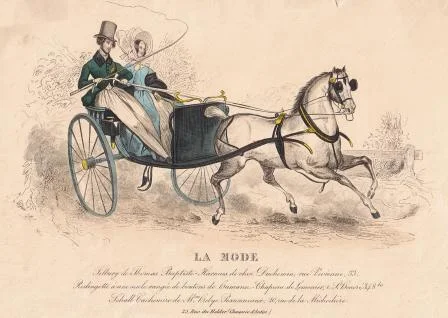 |
| tilburys, |
sociables, landaulets
A landaulet or landaulette carriage is a cut-down (coupé) version of a landau horse-drawn carriage. The landaulette retains the rear half of the landau's two-part folding top.[1]
The earliest use of the word shown in the Oxford English Dictionary is in a patent of 1771, using the former spelling landawlet.[2]
A variant of the brougham called a brougham-landaulette had a top collapsible from the rear doors backward.
The name landaulette was also used for the landaulet car body style, where the passengers are covered by a removable top and the chauffeur is usually covered and separated from passengers by a division.
, britzskas
s
and clarences.
would need a history by itself They were fearful instruments of torture, and for more than one generation at least
- Victorias
- Panel-boot victorias
Victoria in the Palace of Cortés, Cuernavaca, Mexico
A "panel-boot" Victoria, with a drop-down front bench (Ellwood House, DeKalb, Illinois)
which were unsuccessful, and this vehicle, we think, does not now exist in Bombay.
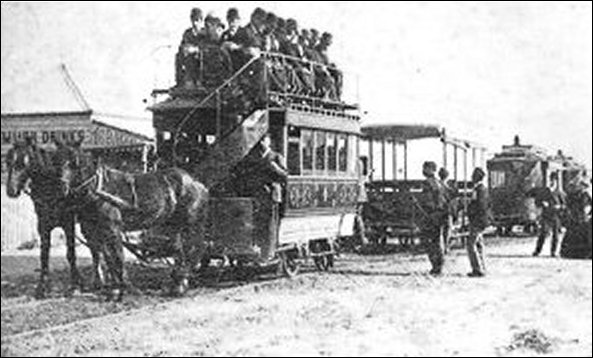
Horse drawn tram of the Beaumaris Tramway Company.
which has been such an inestimable blessing to us all, began about 1874
1875-BOMBAY-MODES OF TRAVEL[1] HACKERRY CARRIAGE[2] ELEPHANTS
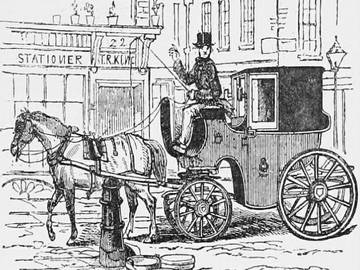
"A
Hackney Coach, 1842," from 'London in the Nineteenth Century' by Sir
Walter Besant. The word 'hackney' went from describing a type of horse
to describing the vehicle the horse pulled; from there, 'hack' became a
term for a person who works for hire.
same photo with 3 names recently put !!!
Glimpses of old Bombay and western India, with other papers (1900) |
William Johnson and William Henderson. Knifegrinders, Bombay, ca. 1856.
1875--The arrival of a railway locomotive in India, 1875.
Indian Tramway constructed by His Highness the Guicowar of Baroda," from the Illustrated London News, 1863*
Antique Print India Baroda Bullock Driven Tram & FDC
This 15 x 11 inches page is from the Illustrated London News (newspaper) of May 23, 1863. I also have the 1987 commemorative FDC (First Day Cover) issue in my collection of this Baroda Tramway scene, see images.
Maharaja Gaekwar, Gaekwad, or Guicowar, as the British called him, were dynastic rulers of Baroda. Better known as Gaekwad Royalty today. The princely state of Baroda was one of the wealthiest in the British India era. The Maharaja constructed a tramway or minor Railway for the people of his princely state.
The tramway was bullock-driven as there were no electric trams at the time. And horses were not used because of lesser pulling power than bullocks, I suppose. Read the interesting article titled “The First Indian Tramway. Made By A Prince.” See separate scan to read the entire article.
The top side picture in the newspaper page is about a Sultan’s return from Egypt. See my posts on- Vintage Postcard The Gaekwad’s Bungalow Bombay, and Vintage Postcard Bombay A Prince On Elephant.
Did you know- in 1908 the Maharaja Gaekwad was the sixth richest man in the world. The Time magazine had even stated about the Maharaja wealth.
From the collection- Vintage Photo Bombay Horse-Drawn Tram., Antique Print Ruins At Fatehpur Sikri., Vintage Photo Madras Mount Road Electric Tram., Raja Ravi Varma’s “Birth of Shakuntala” Oleograph of c1894
| 1853-INDIA'S FIRST TRAIN-BOMBAY TO THANA |
On April 16th, at 3:35pm,1853 the first train in India leaves Bombay for Thane
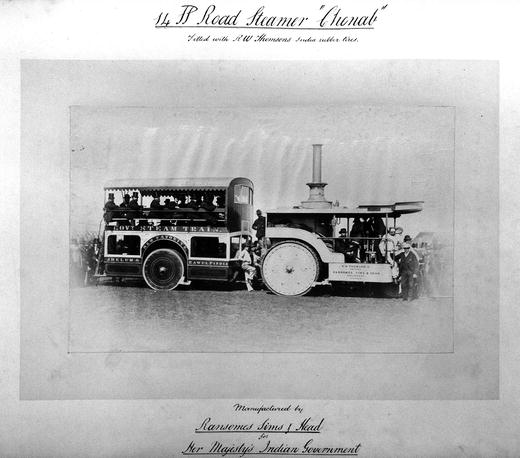
1877-BOMBAY-STEAM ROAD ROLLER
1870-BOMBAY- PAREL RAILWAY STATION -
SHOWING DEPARTURE OF DUKE OF EDINBURGH
1865-SHIP 'BOMBAY' BURNING'BOMBAY'--1865 3RD VOYAGE TO NEW ZEALAND
TOTAL NO:OF PASSENGERS :- 390
| CATHEDRAL ---BEFORE ARRIVAL OF ELECTRICITY-SHOWS HAND PULLED MAT FAN(PUNKAH) CAN BE SEEN AS THE WHITE CLOTH OVER THE PEWS |
BRITISH EMPIRE 1713 (BLUE)
Native Indian musicians from Bombay in 19th Century
![[Indian+Musicians.jpg]](https://blogger.googleusercontent.com/img/b/R29vZ2xl/AVvXsEiqqBgC8dtySp6VZWSsxU0rH4RrDUoXOfXfsyPNSdg3paPODZJlDcjU3cse1TfP7GMGEdefFyr7w2WdrG6Ys4EF3ILVIEzr0jhVy3Gs0xUjVv7k7ZFP1QFCdL_Y9FgQprezlBkGiQS7xvW8/s640-rw/Indian+Musicians.jpg)
How Mumbai lost its animal instinct: The Times of India;Sunday, April 25, 2010,
being chased by a pack of stray dogs from Charni Road Station to Marine Drive. In 1822, a tiger trotted down Malabar Hill, headed to Gowalia Tank to quench its thirst, and ran off up the hill again, its pug marks clearly visible the next morning. And on February 15, 1859, all hell broke loose when a panther was spotted prowling the lanes of Kalbadevi. It was hunted down and shot to death by the then Commissioner of Police as it fled towards the shores of Back Bay.
While old-timers who've grown up on such city lore smile wistfully and doff their hats to a Bombay that no longer is, it's hard to imagine the plush residential areas of Marine Drive and Malabar Hill sharing space with the likes of now endangered animals like tigers, Indian wild boar, jackals and striped hyenas. Mumbai has paid a high price for the tag of financial capital of India, say historians and experts who have documented the demise of wildlife in the city. The last tiger
is believed to have been shot in the vicinity of Vihar Lake on January 22, 1929, by a J J Sutari.
 |
| A Tiger hunt by English men |
But it's not just the tiger that has been driven to extinction in Mumbai. Jackals and hyenas, too, have been systematically hunted down over the last century.
Anand Pendharkar, wildlife biologist and director of NGO SPROUTS, said: "There are a few rare jackal sightings mainly in mangrove areas near Lokhandwala Complex in Andheri, Malad, Charkop and Gorai. And the shy civet cat
and mongoose
occasionally make an appearance in areas like Vikhroli and Goregaon East, but their numbers have dropped drastically."
Striped hyenas
managed to survive the urban onslaught till as late as the 1990s. "We believe that the last two hyenas of Mumbai were shot dead near Film City in Goregaon in the '90s," said Sunjoy Monga, author and naturalist.
The leopard
has managed to survive Mumbai's economic boom. The much-maligned cat scratches out a living, its habitat restricted to the green patches at the Sanjay Gandhi National Park and Aarey Milk Colony.
Mumbai’s best-kept secret
1854--ballooning as a sport in Bombay-(middle picture bottom row)
1887 Queen'S Jubilee Bombay
ROAD SIDE MONEY CHANGER --BOMBAY--1895
KARNALA FORT BOMBAY
KARNALA FORT WALLS
FORT ARNALA -SEA FORT -NEAR VIRAR-BOMBAY
HISTORY
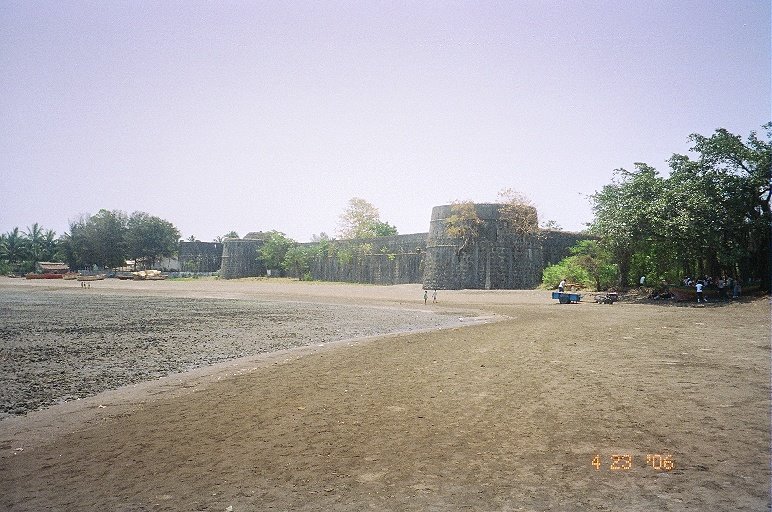
PHOTO SHOWS
CHURCH GATE STREET OF BOMBAY FORT
Churchgate Street of the Bombay Fort. The Church Gate is seen at right end.2nd shop frm left is Bombay Times
#Mumbai [INSIDE VIEW] THE CHURCH GATE ALSO SEEN IN THE DISTANCE.
THE SECOND SHOP FROM CORNER IS 'BOMBAY TIMES1859: Bombay Standard and Chronicle of Western India merges into The Bombay Times and Journal of Commerce to form Bombay Times & Standard --NOW KNOWN AS TIMES OF INDIA NEWSPAPER'[A PALANQUIN IS PARKED IN FRONT OF THE OFFICE ,ALSO A BRIDLED HORSE
|
CliCK AND READ THIS BOOK:-http://www.archive.org/stream/
By gone days in India--0dewauoft#page/n11/mode/2upBOMBAY AND THE HISTORY OF INDIAN FLAG:-
History Of National Flag
Evolution of the Tricolour
It is really amazing to see the various changes that our National Flag went through since its first inception. It was discovered or recognised during our national struggle for freedom. The evolution of the Indian National Flag sailed through many vicissitudes to arrive at what it is today. In one way it reflects the political developments in the nation. Some of the historical milestones in the evolution of our National Flag involve the following:
Unofficial flag of India in 1906
The first national flag in India is said to have been hoisted on
August 7, 1906, in the Parsee Bagan Square (Green Park) in Calcutta now
Kolkata. The flag was composed of three horizontal strips of red, yellow
and green.
The Berlin committee flag, first raised by Bhikaiji Cama in 1907
The second flag was hoisted in Paris by Madame Cama and her band of
exiled revolutionaries in 1907 (according to some inl9OS). This was very
similar to the first flag except that the top strip had only one lotus
but seven stars denoting the Saptarishi. This flag was also exhibited at
a socialist conference in Berlin.
The flag used during the Home Rule movement in 1917
The third flag went up in 1917 when our political struggle had taken a
definite turn. Dr. Annie Besant and Lokmanya Tilak hoisted it during the
Home rule movement. This flag had five red and four green horizontal
strips arranged alternately, with seven stars in the saptarishi
configuration super-imposed on them. In the left-hand top corner (the
pole end) was the Union Jack. There was also a white crescent and star
in one corner.
The flag unofficially adopted in 1921
During the session of the All India Congress Committee which met at
Bezwada in 1921 (now Vijayawada) an Andhra youth prepared a flag and
took it to Gandhiji. It was made up of two colours-red and
green-representing the two major communities i.e. Hindus and Muslims.
Gandhiji suggested the addition of a white strip to represent the
remaining communities of India and the spinning wheel to symbolise
progress of the Nation.
The flag adopted in 1931. This flag was also the battle ensign of the Indian National Army
The year 1931 was a landmark in the history of the flag. A resolution
was passed adopting a tricolor flag as our national flag. This flag, the
forbear of the present one, was saffron, white and green with Mahatma
Gandhi's spinning wheel at the center. It was, however, clearly stated
that it bore no communal significance and was to be interpreted thus.
The present Tricolour flag of India
On July 22, 1947, the Constituent Assembly adopted it as Free India National Flag. After the advent of Independence, the colours and their significance remained the same. Only the Dharma Charkha of Emperor Asoka was adopted in place of the spinning wheel as the emblem on the flag. Thus, the tricolour flag of the Congress Party eventually became the tricolour flag of Independent India.===================================
India’s flag is a tricolor standard, with bands of saffron, white, and dark green. The saffron represents courage, sacrifice, patriotism, and renunciation. It is also the color of the Hindu people. The green stands for faith, fertility and the land; it is the color of the Islam religion. The white is in the center, symbolizing the hope for unity and peace. In the center of the white band is a blue wheel with 24 spokes. This is the Ashoka Chakra (or “Wheel of Law”). The Chakra represents the continuing progress of the nation and the importance of justice in life. It also appears on the Sarnath Lion Capital of Ashoka “
| Madame Bhikaiji Cama (1861-1936) our radical firebrand, was exiled from India and Britain and lived in France. Bhikaiji was a tireless propagandist for Indian Independence |
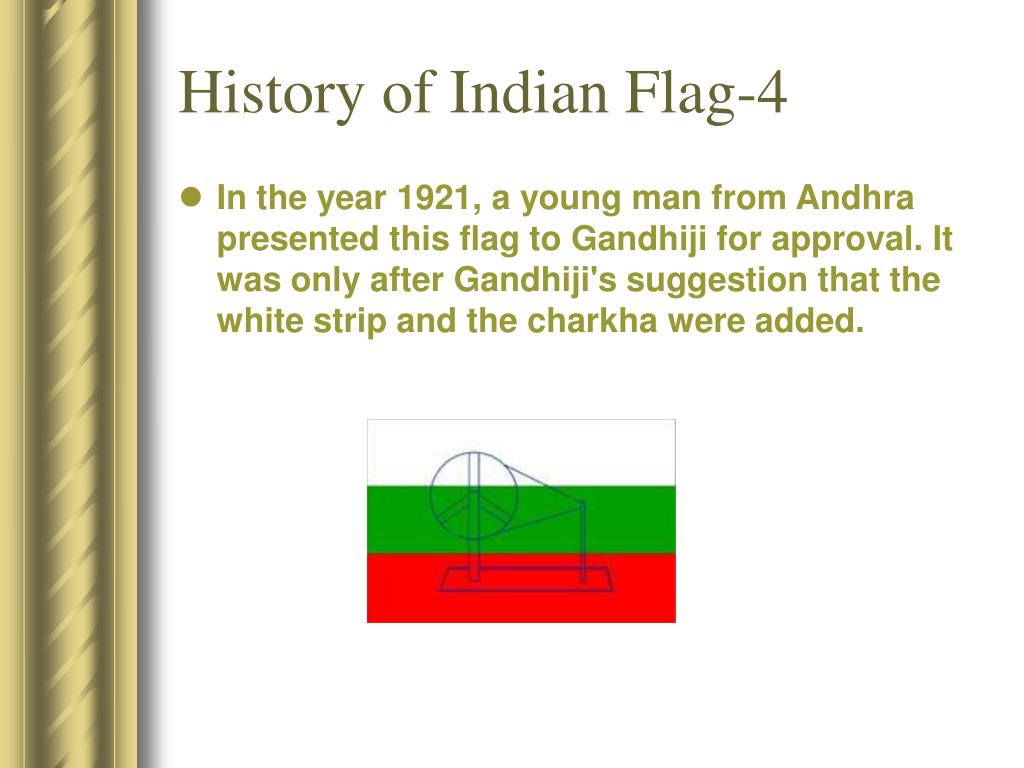 1024 × 768SlideServe
1024 × 768SlideServe 
The Calcutta flag was one of the first unofficial flags of India. It was designed by Sachindra Prasad Bose and Hemchandra Kanungo and unfurled on 7 August 1906 at Parsi Bagan Square (Grish Park), Calcutta.[1]
The flag had three horizontal bands of equal width with the top being orange, the centre yellow and the bottom green in colour. It had eight half-opened lotus flowers on the top stripe representing the eight provinces of India and a picture of the sun and a crescent moon on the bottom stripe. वन्दे मातरम् (Vande Mataram, meaning "I do homage to the mother") was inscribed in the center in Devanagari.
See also
The flag that was first hoisted on August 7, 1906, at the Parsee Bagan Square in Calcutta.
1913The Ghadar Party Flag
The Ghadar Party flag was also used in the United States as a symbol for India for a short period of time.In August 1913, Southasian farmworkers and students (primarily Punjabi migrants) gathered in Stockton, California, to form the Ghadar Party. They were angry at British imperialism, but also frustrated with the Indian National Congress. ‘Freedom will not come through supplication,’ their poets sang. ‘Political power will not come by appeal/ Don’t offer cowardly petitions/ Lift up the sword, they will not remain/ What have your petitions wrought?/ Brutal foreigners have plundered our homeland.’ The sentiment of complete independence thus came almost two decades before the Congress took it to heart. ‘Nation after nation are ready to rise up,’ the Ghadar Party’s newspaper proclaimed in July 1914. ‘Your voice has reached China, Japan, Manila, Sumatra, Fiji, Java, Singapore, Egypt, Paris, South Africa, South America, East Africa and Panama.’
IN 1917…..
The Home Rule Bal Ganga Dhar Tilak adopted a new flag in 1917. The flag had union jack at the top, near hoist. The rest of the flag contains five red and four green strips.
It had seven stars on it in the shape of “Saptarishi” Constellation which is sacred one for Hindus. It also had a crescent moon, star at the top fly end. This flag didn’t become popular in masses.
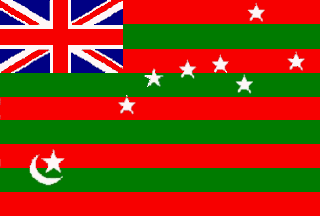 IN 1921…..As Mahatma Gandhi communities of India to be represented in the flag of the nation, so a new flag was designed. At the top was white then green and at the bottom was red color. In this flag white symbolized minority communities of India, green was for Muslims and the red one was for Hindu and Sikh communities. The “Charkha” was drawn across all the bands symbolizing the unification of these communities.
IN 1921…..As Mahatma Gandhi communities of India to be represented in the flag of the nation, so a new flag was designed. At the top was white then green and at the bottom was red color. In this flag white symbolized minority communities of India, green was for Muslims and the red one was for Hindu and Sikh communities. The “Charkha” was drawn across all the bands symbolizing the unification of these communities.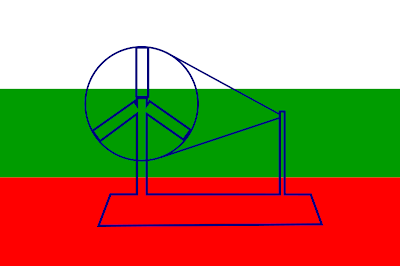 IN 1931……Some people were not at all happy with the communal interpretation of the flag. Keeping all this in a view a new flag was designed. This color signified combined spirit of Hindu yogis as well as Muslim dervish. In another flag by Pingali Venkayya had three color. Saffron was at the top Followed by white in the middle and green being the lowermost. The “Charkha” was at the center of white color. This flag was passed at the meeting of Congress Committee in 1931 and was adopted as the official flag of the Committee.
IN 1931……Some people were not at all happy with the communal interpretation of the flag. Keeping all this in a view a new flag was designed. This color signified combined spirit of Hindu yogis as well as Muslim dervish. In another flag by Pingali Venkayya had three color. Saffron was at the top Followed by white in the middle and green being the lowermost. The “Charkha” was at the center of white color. This flag was passed at the meeting of Congress Committee in 1931 and was adopted as the official flag of the Committee.
1942 1945[subhas chandra bose with Indian soldiers of 'Azad Hind'-IN SINGAPORE]

IN 1947…..
When India got independence, a committee headed by Rajinder Prasad was formed to discuss the National Flag of India and they decided to adopt the flag of Indian National Congress with suitable modifications as the flag of India. As a result the flag of 1931 was adopted as Indian flag but “Charkha” in the middle was replaced by “Chakra” (wheel) and hence our national Flag came into being.
 The Indian National Flag came into being in its present form at the meeting of Constitutional Assembly on 22nd July 1947.
The Indian National Flag came into being in its present form at the meeting of Constitutional Assembly on 22nd July 1947.[Red Ensign was established as the proper colours for the British ships by a proclamation in 1674. The Merchant Shipping Act of 1894 brought up to date the law concerning the wearing of ensigns by British ships. Prior to this many ensigns of various designs were in use.]

New Purna Swaraj (Total Independence) Flag: 1931-1947

Some more interesting items onSwaraj flag (1921-1931)(from the collection ofSri G. Biswas of Kolkata)
The Flag Committee -1931 headed by Dr. Pattabhi Sitaramyya after going through various suggestions as received from various sources came up with an entirely new design, allSaffron Flag charged with a brown Charkha at
 the top left corner (canton) of the flag. The Flag design recommended by the Flag Committee failed to create any consensus amongst the Congress members in general and Muslims members in particular. The proposed flag was summarily rejected by the Congress Working Committee for the reason that the flag design interfered too much with the flag. As a result the all Saffron Flag never saw the light of day.
the top left corner (canton) of the flag. The Flag design recommended by the Flag Committee failed to create any consensus amongst the Congress members in general and Muslims members in particular. The proposed flag was summarily rejected by the Congress Working Committee for the reason that the flag design interfered too much with the flag. As a result the all Saffron Flag never saw the light of day. 
HISTORY OF CURRENCY NOTES IN INDIA ; AND THE Bank of Bombay and later under R.B.I[RESERVE BANK OF INDIA]
| KING GEORGE 6TH OF ENGLAND ;THE EMPEROR OF INDIA |





























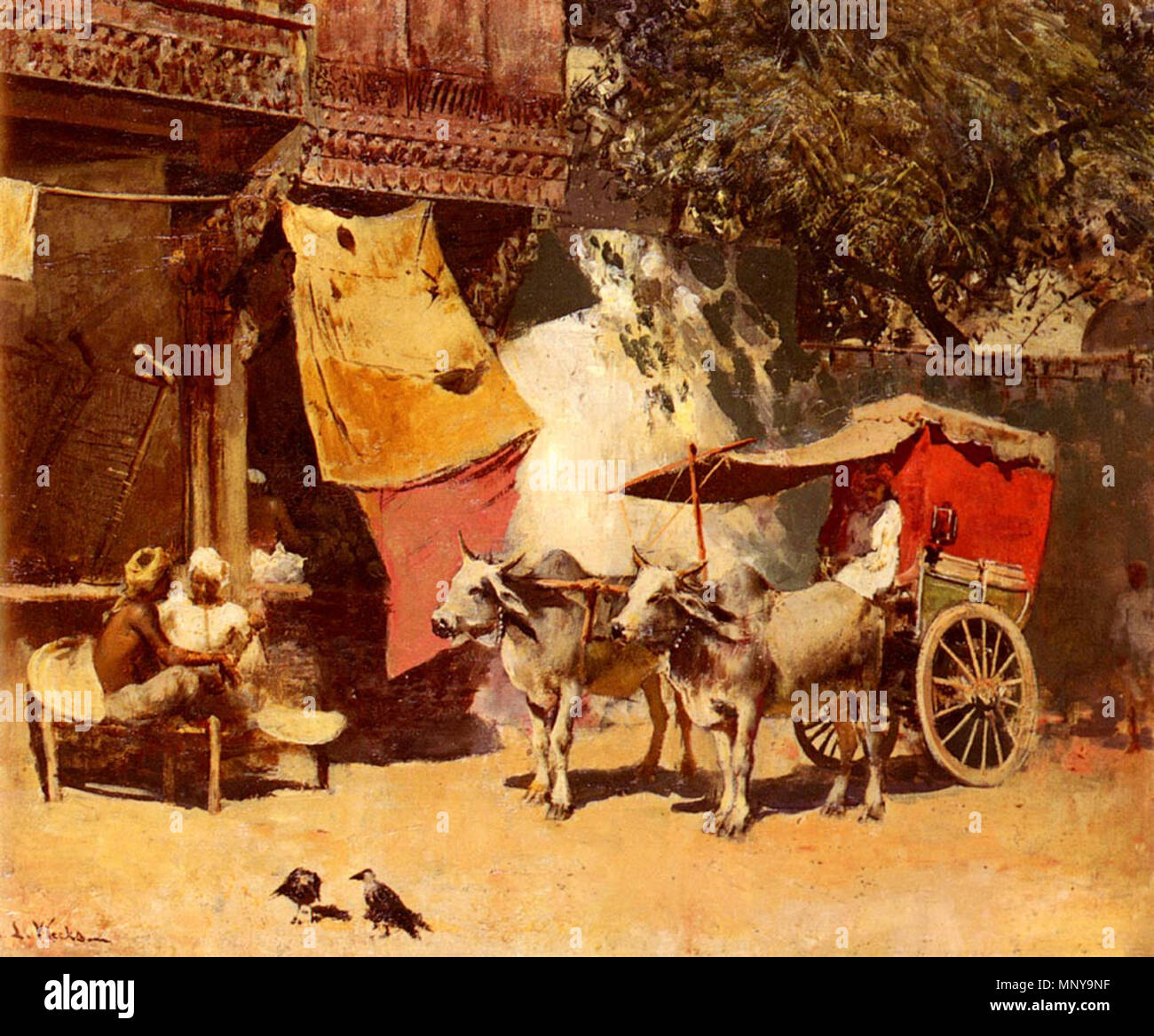























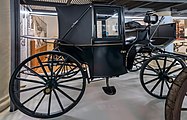



































































































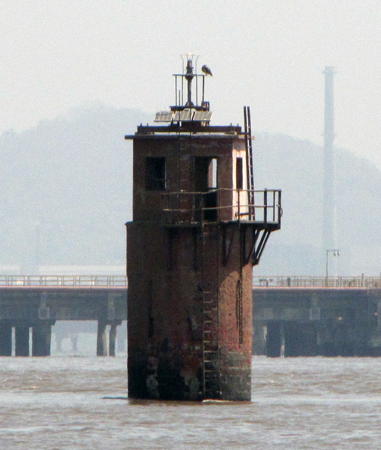






No comments:
Post a Comment